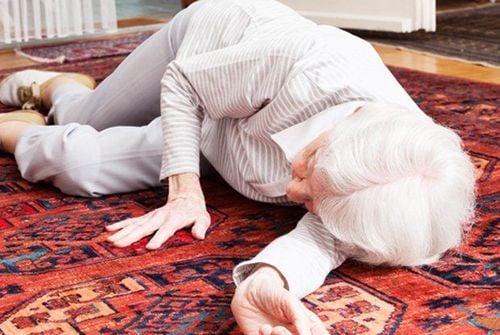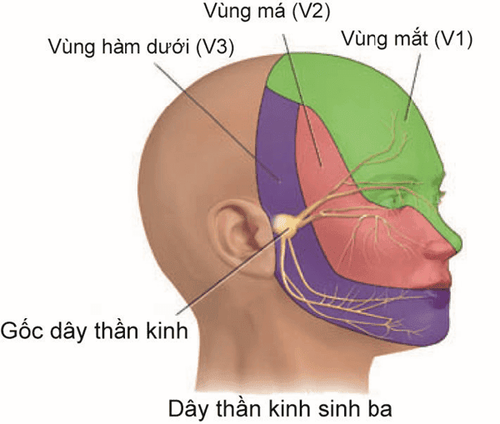This is an automatically translated article.
Supersensory disturbances and profound sensory disturbances are the two most common types of sensory disturbances. Superficial and deep sensory examination should be performed early and properly to accurately diagnose the patient's health condition, thereby making appropriate treatment options.
1. What is shallow and deep sensory disorder?
Sensory disorders include symptoms such as increased, decreased or lost sensation due to neurological diseases. Normally, in clinical practice, people divide sensory disorders into 3 types:
Superficial sensory disturbances: Including pain sensation, temperature sensation and tactile sensation; Deep sensory disturbances: Includes vibration sensation, pressure sensation, musculoskeletal sensation, and sensation of weight perception; Complex sensory disturbances: Includes 2-dimensional sense, perception of objects.
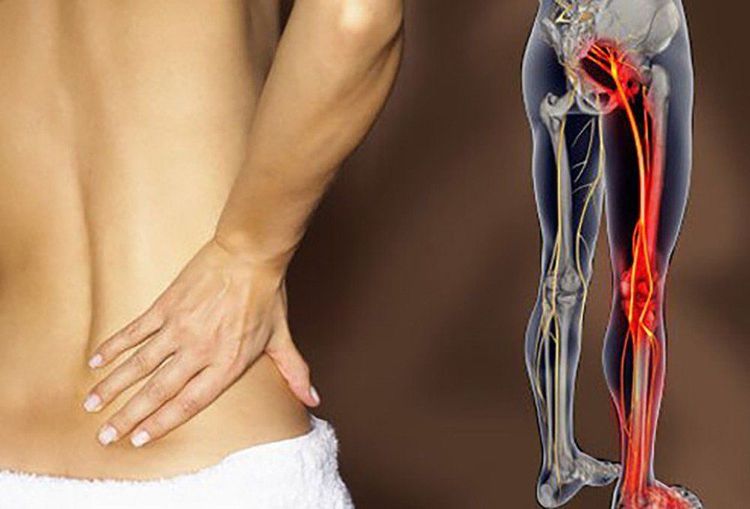
Cảm giác đau thần kinh là triệu chứng của rối loạn cảm giác nông
2. How to examine shallow and deep sensations
Human sensory function is greatly influenced by subjective and psychological factors. Therefore, sensory examination needs to be performed meticulously, carefully, and requires a lot of experience from the doctor. Sensory symptoms also have great significance in clinical examination, playing an important role in the local diagnosis of nerve damage.
2.1 Principles of sensory examination
The distribution of sensations on the body surface is very complex, sensory perception is influenced by many subjective factors, so when examining sensation, it is necessary to pay attention to the following principles:
Patients need to keep their spirits up. apple, coordinate well with the doctor's instructions; Have the patient close his or her eyes; Do not examine when the patient is tired, the examination can be divided into several sessions if necessary; Sensory examination in 2 dimensions: Along the body or extremities, examining the circumference of the extremities; When examining, it is necessary to avoid asking questions that suggest answers to the patient (not asking if it is painful, hot, ...) but should ask how it feels so that the patient can accurately express his or her feelings. me; Mark the skin with sensory disturbances, identify the degree of sensory disturbances; Symmetrical examination to compare sensations between the two sides of the body.
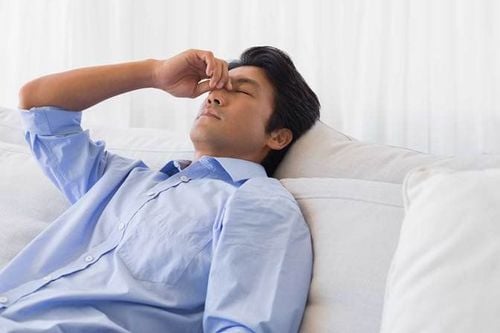
Khi bệnh nhân có dấu hiệu mệt mỏi thì không nên tiến hành khám
2.2 Examination of shallow sensations
Tactile examination:
Tools: Brush, cotton swab, blunt-tipped needle and a piece of paper; Method of examination: The doctor uses a cotton swab, a blunt needle or a brush, a piece of paper that is lightly touched perpendicular to the skin surface at symmetrical positions on both sides of the body. Then, ask the patient if he can recognize the stimulus, whether he can distinguish between sharp and blunt stimuli, whether the ability to recognize stimuli on both sides of the body is equivalent; Outcomes: The patient may have increased, decreased, or loss of tactile perception. Temperature Sensation Test:
Equipment: Use 2 test tubes, one with 20°C cold water and one with 40°C warm water. Normally, the skin can sense the temperature of an object if it differs from body temperature by 5°C; How to examine: Place test tubes filled with hot and cold water in turn on the areas to be examined. Then, compare the ability to perceive hot - cold sensations between the two sides of the body, between different skin areas on one side of the body; The obtained results: Can detect the patient's decrease or loss of temperature sensation, detect the disease indistinguishable hot - cold. Examination of pain:
Instruments: Needle with blunt tip; How to examine: The doctor will gently prick or trace the needle on the symmetrical skin areas of the two sides of the body, then ask the patient about the feeling between the two sides of the body is the same. The doctor may ask the patient to count the number while inserting needles on different areas of skin between the two sides of the body in decreasing intensity; Obtained results: It is possible to detect that patients have an increase, decrease, or loss of pain sensation in a certain area of the skin or have a pain sensation disorder. Sensory examination of the area:
Instruments: Jaw-tipped needle; Method of examination: Perform the same as when examining pain, ask the patient where the pain is; Results obtained: The patient has a normal result if the correct location of the stimulus is shown on the body. In the case of the disease, the patient will not be able to recognize the location of the needle on the body. In addition, there are patients experiencing parasympathetic (a state of stimulation on one side but the patient perceives as a stimulus on the opposite side). Sensory examination to distinguish 2 different points on the skin:
Instruments: Compa has 2 pointed tips with an aperture gauge; How to examine: The doctor expands the two ends of the compass, gently presses on different areas of the skin, and then asks the patient how many sharp points do you feel. Next, the doctor gradually narrows the opening of the two compass heads, continues to examine to detect the smallest distance that the patient can distinguish the two points affected by the compass head. Then measure the distance between the 2 points; Obtained results: With normal results, the ability to distinguish 2 points of different parts of the body will be different, in which the fingertips are the most sensitive (3 - 8mm), then the soles of the feet. hand, back of hand, chest, forearm, leg, back of arm and thigh (75mm). In pathological cases, the distance that the patient perceives 2 points will be higher. Sensory examination of drawings on the skin (2-dimensional sense of space):
Instruments: Needle with blunt tip; How to examine: The doctor writes letters, numbers or draws pictures on the patient's skin, asks the patient what letters, numbers, drawings,... At first, the doctor writes and draws small letters, then increased if the patient is not aware; Results: Normally, healthy people can recognize letters or numbers with a size of 0.5 - 25mm (depending on the skin area). In people with diseases of shallow sensation, the height of letters or numbers needs to be larger to be recognized.
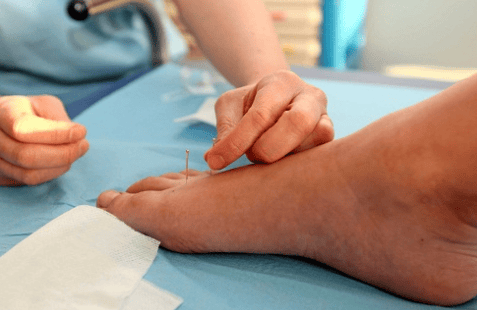
Hình ảnh khám cảm giác nông
2.3 Deep sensory examination
Examining pressure sensation:
During the examination, the doctor will squeeze the patient's muscles hard and ask the patient about the perception of sensation between the two sides of the body and between different muscles. In addition, the doctor may check for pain in the testicles, larynx, and eyeballs.
Postural Sensation Examination:
First, the doctor puts the patient in a comfortable lying or sitting position, and then closes the eyes. Examination operation is as follows:
Test to determine the position in space: The doctor holds a part of the patient's limbs such as fingers, hands, toes, feet, ... gently. The doctor then passively moves these limbs in different directions, and asks the patient about the direction of movement of the limbs. The physician needs to find the minimum angle at which the patient can perceive movement of the limb. In addition, the doctor can also examine by placing the patient's limb in a certain position, and then asking the patient to perform the same operation on the limb of the symmetrical side; Romberg test: Simple Romberg: Let the patient stand, feet together, arms outstretched and fingers spread. Then 1 for the patient to open their eyes to get used to the starting position; then 2 for the patient to close their eyes; Complicated Romberg: Put the patient in a standing position, put the feet together in a straight line, raise both hands in front, fingers spread. Then 1 for the patient to stand with eyes open to get used to the position, then 2 for the patient to close their eyes; Results: Usually, the patient can stand both with eyes open or closed. Patients with sensory disturbances if they cannot stand in the starting position or when looking at the eyes, they stagger or fall. In case there is a disorder of posture in one joint, that limb will not be able to keep its original position, slowly changing its position in a dance-and-play style; Index finger - heel test: Patient is in supine position, eyes closed, index finger pointing at heel, maintaining position. Normal healthy people can maintain this position, but for people with sensory disorders, the index finger is often just off the heel.
Check for vibration sensation:
Instruments: The doctor uses a tuning fork with a frequency of 128 or 256 cycles/gy. Then, the doctor explains to the patient how to examine so that the patient can coordinate well, the patient can sit or lie down; How to examine: The doctor gently taps the tuning fork branch on the palm of the hand to make the tuning fork vibrate, then place the tuning fork root on the ends of the bones, from the tip of the limb to the base of the limb. Next, the doctor looked at the tips of the two branches of the tuning fork with graduated lines, determined when the number of lines was clearly visible, the patient could no longer perceive the vibration sensation. It is necessary to compare and recognize the vibration sensation between the two sides of the body or compare with normal people; Results: Normal healthy people can't perceive vibration sensation when seeing clearly the number 8 line on the tuning fork. Patients with reduced vibrato will find the tuning fork no longer vibrates while not seeing all the digits on the tip of the tuning fork. Complex sensory examination (sensory perception of objects):
Instruments: Objects that are familiar to the patient but do not have an odor and do not make a sound such as a pen, paper, key,...; How to examine: For the patient to close his eyes, the doctor in turn puts each object in the patient's hand, asking the patient what it is; Results: People without the disease can identify objects that are familiar to them. Patients with the disease cannot distinguish these items. After examination, the doctor can determine whether the patient is healthy or has sensory disturbances such as: loss of sensation, hypoesthesia, hyperesthesia, dissociation, dysesthesia or pain paresthesia.

Người bệnh có thể tới Bệnh viện Vimec để khám cảm giác nông - sâu
Superficial - deep sensory examination is an examination that should be performed when a patient is suspected of having a sensory disorder. Patients who are assigned this examination method need to strictly follow the doctor's instructions to accurately identify the disease, thereby providing timely and effective treatment.
For examination and treatment at Vinmec, please go directly to Vinmec health system or register online HERE.








